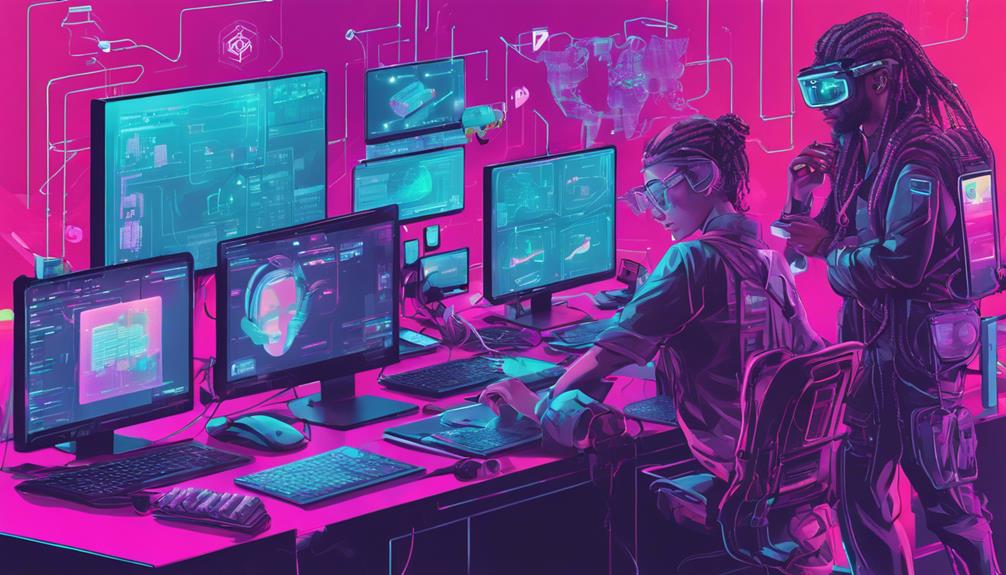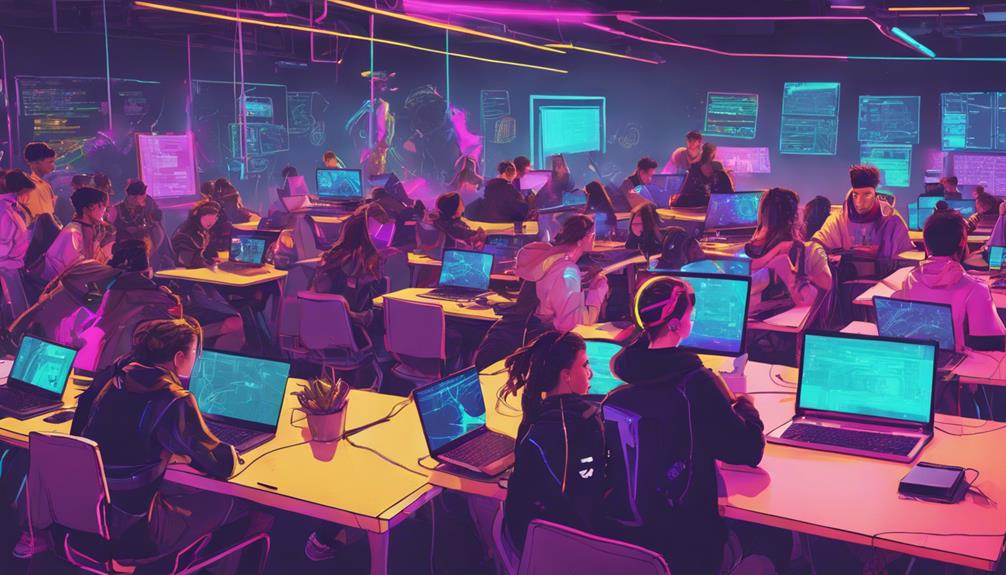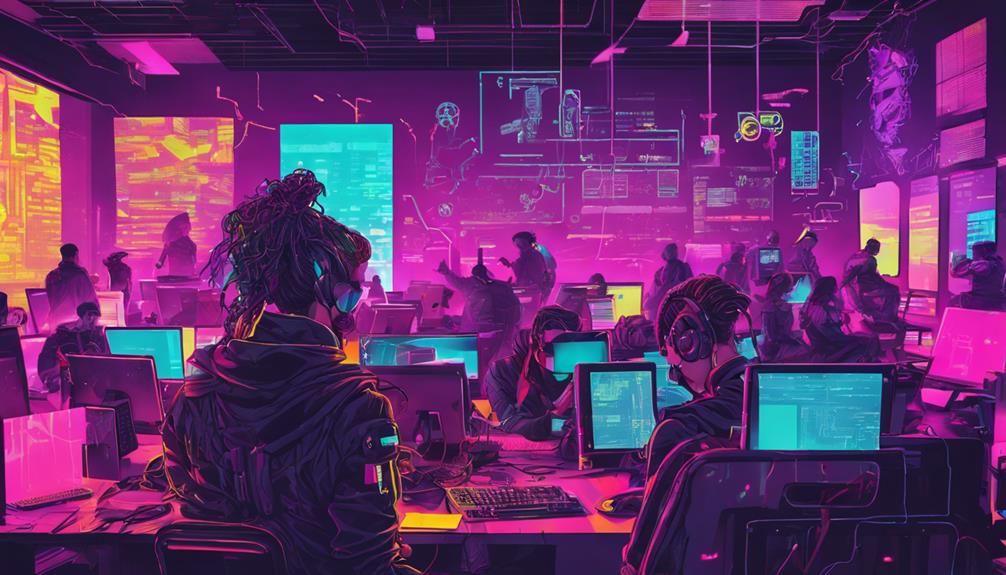Government initiatives tackle challenges in critical mineral supply chains through hackathons, fostering innovation and sustainability. Objectives include optimizing logistics and implementing sustainable practices. Key stakeholders involve government agencies, industry experts, researchers, and innovators. Challenges encompass reliance on imports, disruptions, environmental impacts, demand spikes, delays, and shortages. Proposed solutions feature collaborative platforms, cutting-edge tech, and knowledge sharing. Impact includes reducing import reliance, promoting clean energy, and supporting global initiatives. Collaboration boosts innovation, pooling knowledge for strategic solutions. Technology like AI aids in data analysis and innovation. Government commitment to reducing reliance on imports drives domestic production and expertise pooling. Learn more about the critical mineral supply chain challenges and solutions.
Key Takeaways
- Government-led hackathons address mineral supply chain challenges.
- Aim to foster innovation, develop solutions, and optimize logistics.
- Key stakeholders involved: government agencies, industry experts, researchers.
- Focus on sustainable practices, reducing import reliance, and enhancing environmental standards.
- Collaborative platforms, cutting-edge technologies, and resilience are key solutions.
Objectives of the Hackathons
Our primary goal in organizing these hackathons is to address challenges in critical mineral supply chains by fostering innovation and collaboration. Hackathons provide a platform for participants to develop innovative solutions that enhance the resilience and security of supply chains for critical minerals.
By leveraging data, technology, and collaborative problem-solving, the hackathons aim to identify critical points of failure in the mineral supply chain, optimize transportation and logistics, and implement sustainable practices for responsible sourcing.
Through these hackathons, we seek to bring together stakeholders from government, industry, academia, and the tech community to brainstorm, prototype, and develop actionable strategies for improving supply chain resilience.
The objectives include not only developing innovative solutions but also fostering cross-sector partnerships, promoting knowledge sharing, and driving initiatives to strengthen the domestic critical mineral supply chain infrastructure.
Key Stakeholders Involved
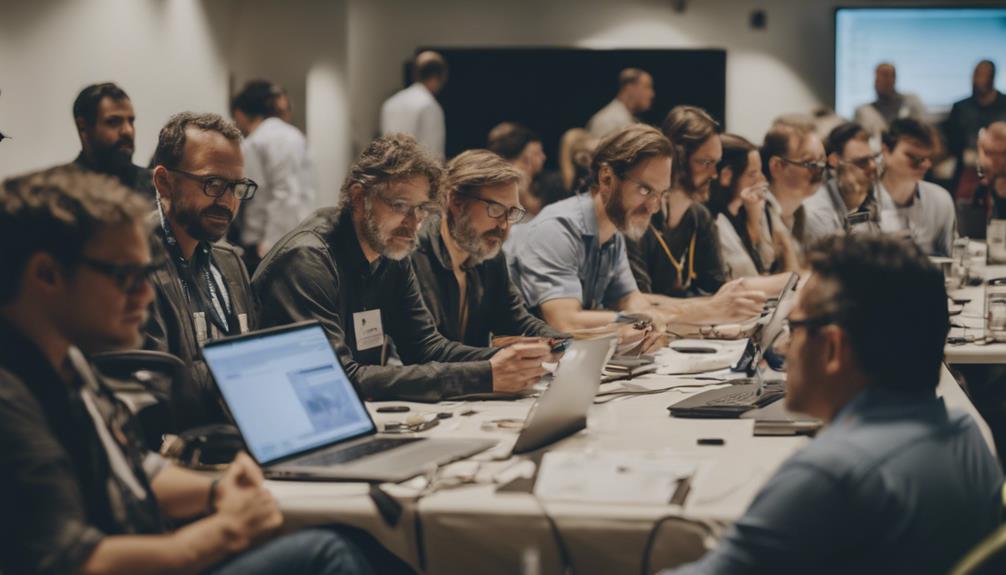
Key stakeholders play pivotal roles in government hackathons. They represent diverse sectors such as industry, academia, and government agencies. Their involvement is essential for outlining collaboration strategies and defining specific roles to address challenges in critical mineral supply chains.
Stakeholder Roles Defined
Stakeholder roles in the hackathons for critical mineral supply chains are clearly defined, encompassing government agencies, industry experts, academic researchers, and technology innovators. These key players collaborate to address challenges and drive innovation in critical mineral supply chains.
- Government Agencies: Entities like DARPA and the Department of Energy play an important role in organizing and supporting the hackathons, providing strategic direction and resources.
- Industry Experts: Contribute specialized knowledge on critical mineral supply chains, offering insights to enhance sustainability and efficiency.
- Academic Researchers: Bring expertise in data analytics and artificial intelligence, aiding in the development of innovative solutions to complex challenges.
- Technology Innovators: Play a significant role in creating tools and technologies that can revolutionize the management and optimization of critical mineral supply chains.
Together, these diverse stakeholders aim to foster collaboration, creativity, and resilience in the critical mineral supply chain ecosystem.
Collaboration Strategies Outlined
In our collaborative approach to addressing challenges in critical mineral supply chains through hackathons, various stakeholders including industry experts, researchers, policymakers, and technology innovators are actively involved. The Department of Defense plays a crucial role in ensuring national security by contributing expertise in supply chain resilience. AI and machine learning specialists bring cutting-edge technology to analyze and optimize supply chain operations. Policymakers offer regulatory insights to enhance the sustainability and security of critical mineral supply chains. This multi-faceted collaboration fosters innovation and problem-solving, aiming to fortify the domestic supply chain for critical minerals essential for clean energy technologies and national security. By leveraging data analytics, artificial intelligence, and advanced technologies, these stakeholders work together to address vulnerabilities and create robust solutions that benefit various industries and safeguard the nation's interests. Through these collaborative efforts, we strive to build a more resilient and secure foundation for critical mineral supply chains.
| Stakeholder | Role | Contribution |
|---|---|---|
| Industry Experts | Provide industry-specific insights and expertise. | Share knowledge to enhance supply chain efficiency and effectiveness. |
| Researchers | Offer research-driven solutions and technological advancements. | Develop innovative strategies for improving supply chain resilience. |
| Policymakers | Contribute regulatory guidance and strategic direction. | Ensure compliance and sustainability in critical mineral supply chain operations. |
Challenges in Mineral Supply Chains

Several challenges plague mineral supply chains, impacting their reliability and sustainability.
- Guarantee: Critical mineral supply chains heavily rely on imports, making them vulnerable to geopolitical disruptions.
- Secure: Any disruption in the supply chain can lead to delays and shortages, affecting industries dependent on critical minerals.
- Environmental Concerns: The extraction and processing of critical minerals can have significant environmental impacts, raising sustainability issues.
- Strengthen: With the rise of clean energy technologies like electric vehicles and renewable energy systems, the demand for critical minerals is expected to skyrocket by 2040.
These challenges highlight the pressing need for innovative solutions to safeguard the resilience and sustainability of critical mineral supply chains.
Hackathons present a proactive approach to address these issues, aiming to foster collaboration and creativity in developing strategies that can mitigate these challenges effectively.
Innovative Solutions Proposed
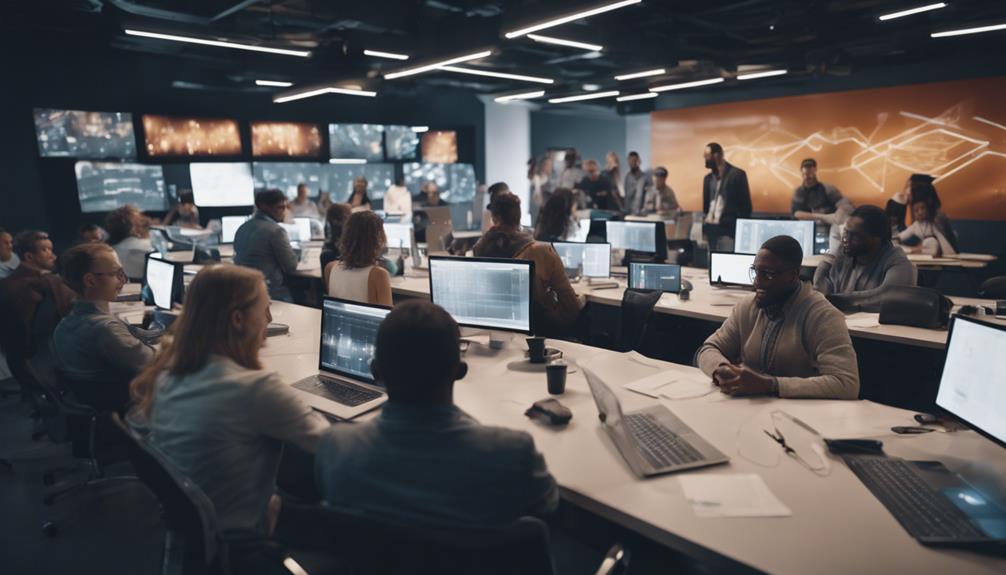
How can hackathons contribute to the development of innovative solutions for critical mineral supply chain challenges?
Hackathons provide a collaborative platform for experts to brainstorm and propose actionable measures to secure the availability of critical minerals. By leveraging the collective expertise of participants, hackathons can foster the generation of innovative ideas that could lead to advancements in sourcing, processing, and recycling critical minerals.
Moreover, the integration of cutting-edge technologies such as AI and machine learning in these events can enable the development of sophisticated strategies to address the complexities of critical mineral supply chains.
The focus on enhancing the resilience and sustainability of critical mineral supply chains during hackathons underscores the importance of finding creative solutions to mitigate disruptions. Through collaboration and knowledge sharing, stakeholders can work together to tackle the challenges associated with ensuring a stable supply of critical minerals.
Impact on Sustainability Goals

As we address the Impact on Sustainability Goals within hackathons for critical mineral supply chains, we focus on fostering collaboration towards developing innovative solutions for sustainable mineral production and recycling. The impact of these hackathons goes beyond immediate solutions, influencing long-term strategies and policies to enhance sustainability in the critical mineral industry.
Key aspects of this impact include:
- Reduction of import reliance: By promoting domestic production and responsible mining practices, we aim to decrease reliance on foreign sources, enhancing the United States' national security.
- Promotion of clean energy technologies: Sustainable mineral production supports the development of clean energy technologies, aligning with global efforts to combat climate change.
- Enhancement of environmental standards: Collaboration among stakeholders fosters the implementation of higher environmental standards, ensuring responsible resource extraction and processing.
- Support for global clean energy initiatives: Accelerating the development of responsible critical energy minerals supply chains contributes to the global shift towards sustainable energy sources, benefiting both the environment and national security.
Importance of Collaboration

Collaboration among diverse experts in hackathons is pivotal for driving innovation and finding synergistic solutions to complex challenges in critical mineral supply chains.
By pooling our collective knowledge and expertise, we can explore fresh perspectives and develop cutting-edge strategies to bolster the resilience of these supply chains.
The power of collaboration not only enhances the quality of solutions but also fosters a sense of shared responsibility in securing the availability of critical minerals for the future.
Collaboration Boosts Innovation
Pooling expertise and resources in hackathons energizes innovation by fostering collaborative solutions to challenges in critical mineral supply chains. These collaborative efforts are essential in addressing vulnerabilities in global supply chains for essential mineral resources.
Here are some key ways in which collaboration boosts innovation in hackathons:
- Cross-disciplinary Perspectives: Participants from various backgrounds bring diverse viewpoints, leading to holistic solutions.
- Rapid Prototyping: Collaborative teams can quickly iterate on ideas, testing and refining innovative solutions efficiently.
- Knowledge Sharing: Experts share insights and best practices, accelerating the development of effective strategies.
- Networking Opportunities: Hackathons provide a platform for professionals to connect, fostering future collaborations and partnerships.
Through these collaborative mechanisms, hackathons play a critical role in driving technological advancements, enhancing supply chain resilience, and ensuring secure access to critical minerals for sustainable development.
Synergy Enhances Solutions
By synergizing diverse expertise and resources, hackathons magnify the impact of collaborative efforts in enhancing solutions for critical mineral supply chains. These events bring together experts, industry leaders, and innovators to tackle challenges using skills in data analysis, artificial intelligence, and supply chain management.
Through the Mineral Security Partnership, participants leverage AI and machine learning to develop innovative solutions, enhancing the resilience and security of critical mineral supply chains essential for clean energy technologies and national security. The collaborative nature of hackathons allows for exploring new approaches, technologies, and strategies to mitigate risks and disruptions in these essential supply chains.
Role of Technology in Solutions
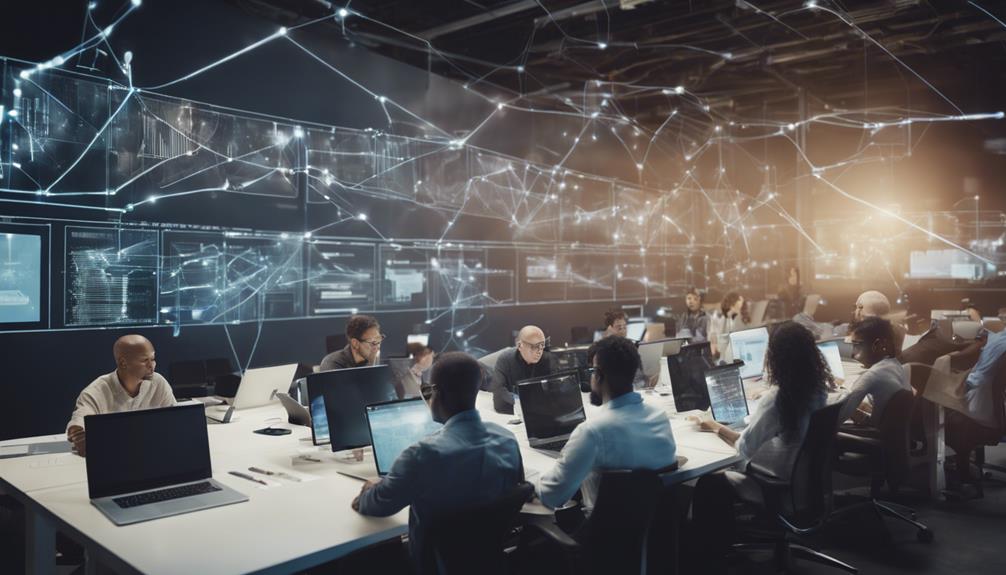
Technology plays a pivotal role in analyzing data, identifying vulnerabilities, and developing solutions to enhance the resilience of critical mineral supply chains. Through hackathons, experts leverage advanced technologies to address challenges effectively.
Key aspects of technology in solving supply chain issues include:
- AI and Machine Learning: These technologies aid in data analysis, pattern recognition, and predictive modeling to optimize supply chain operations.
- Geological Survey (USGS): Utilizing data from organizations like the USGS helps in mapping mineral resources, improving extraction processes, and ensuring a stable supply chain.
- Data Analytics: By crunching vast amounts of data, supply chain managers can make informed decisions, forecast trends, and enhance operational efficiency.
- Advanced Algorithms: Algorithms enable the automation of tasks, such as route optimization and inventory management, leading to cost savings and improved reliability in critical mineral supply chains.
The integration of these technological tools fosters innovation and collaboration, driving the development of sustainable solutions for the challenges faced by critical mineral supply chains.
Government's Commitment to Support

The government's dedication to bolstering critical mineral supply chains is evident through its announcement of hackathons aimed at fostering innovative solutions and technologies.
These initiatives showcase the government's commitment to supporting the development of strategies that reduce reliance on foreign sources of critical minerals. By bringing together experts, researchers, and stakeholders from both the public and private sectors, the hackathons provide a platform for collaborative efforts towards enhancing supply chain resilience.
Through these events, the government aims to secure domestic production and guarantee access to critical minerals for various industries. The involvement of key stakeholders in these hackathons reflects a concerted effort to address challenges in critical mineral supply chains effectively.
Additionally, the government's partnership with organizations like the Geological Survey (USGS) highlights the importance of leveraging expertise from both government agencies and private entities to achieve sustainable solutions for securing critical mineral supply chains.
Future Outlook and Potential Results
Our focus shifts towards the anticipated outcomes and future prospects of the hackathons for critical mineral supply chains. The innovative solutions developed during these hackathons have the potential to revolutionize the way raw materials are sourced and utilized, leading to enhanced economic prosperity and national security. Here are some key points to ponder:
- Increased Domestic Production: By fostering collaboration between industry, academia, and government, the hackathons aim to boost domestic production of critical minerals, reducing reliance on foreign sources.
- Enhanced Supply Chain Resilience: Participants will work together to develop data-driven strategies that optimize supply chain resilience, ensuring a steady flow of raw materials.
- Leveraging Technology: The hackathons will harness the power of artificial intelligence and data analytics to streamline critical mineral supply chains, making them more efficient and responsive to market demands.
- Strengthening the Ecosystem: The goal is to create a robust ecosystem for critical mineral supply chains, promoting sustainable practices and long-term economic growth.
Frequently Asked Questions
Did DOE Invest $75 Million to Strengthen Nation's Critical Minerals Supply Chain?
Yes, we did. The Department of Energy invested $75 million to bolster the nation's critical minerals supply chain. This investment targets reducing dependence on foreign sources for essential minerals essential for clean energy technologies.
What Are the Critical Minerals in the Supply Chain?
Critical minerals in the supply chain are essential for the economy and national security. Demand for these minerals is expected to increase greatly by 2040. Understanding their composition and availability is vital for sustainable supply chains.
What Is the United States Critical Minerals Strategy?
We've got a plan to reduce reliance on foreign mineral sources. It's about securing a stable supply chain for key minerals. Our strategy covers industries like clean energy and aims to boost domestic production and responsible sourcing.
What Is the Supply Chain Resilience Act?
The Supply Chain Resilience Act focuses on strengthening critical mineral supply chains for the U.S. economy and national security. It aims to reduce import reliance, enhance domestic manufacturing, and secure a stable supply for key industries.
Conclusion
To sum up, the hackathons announced by the government aim to address challenges in critical mineral supply chains. With 80% of the world's cobalt, a key mineral for electronic devices, sourced from the Democratic Republic of Congo, ensuring a sustainable and ethical supply chain is vital.
By fostering collaboration and leveraging technology, innovative solutions can be developed to tackle these issues and work towards achieving sustainability goals. The government's commitment to support these efforts signifies a step in the right direction for the industry.

